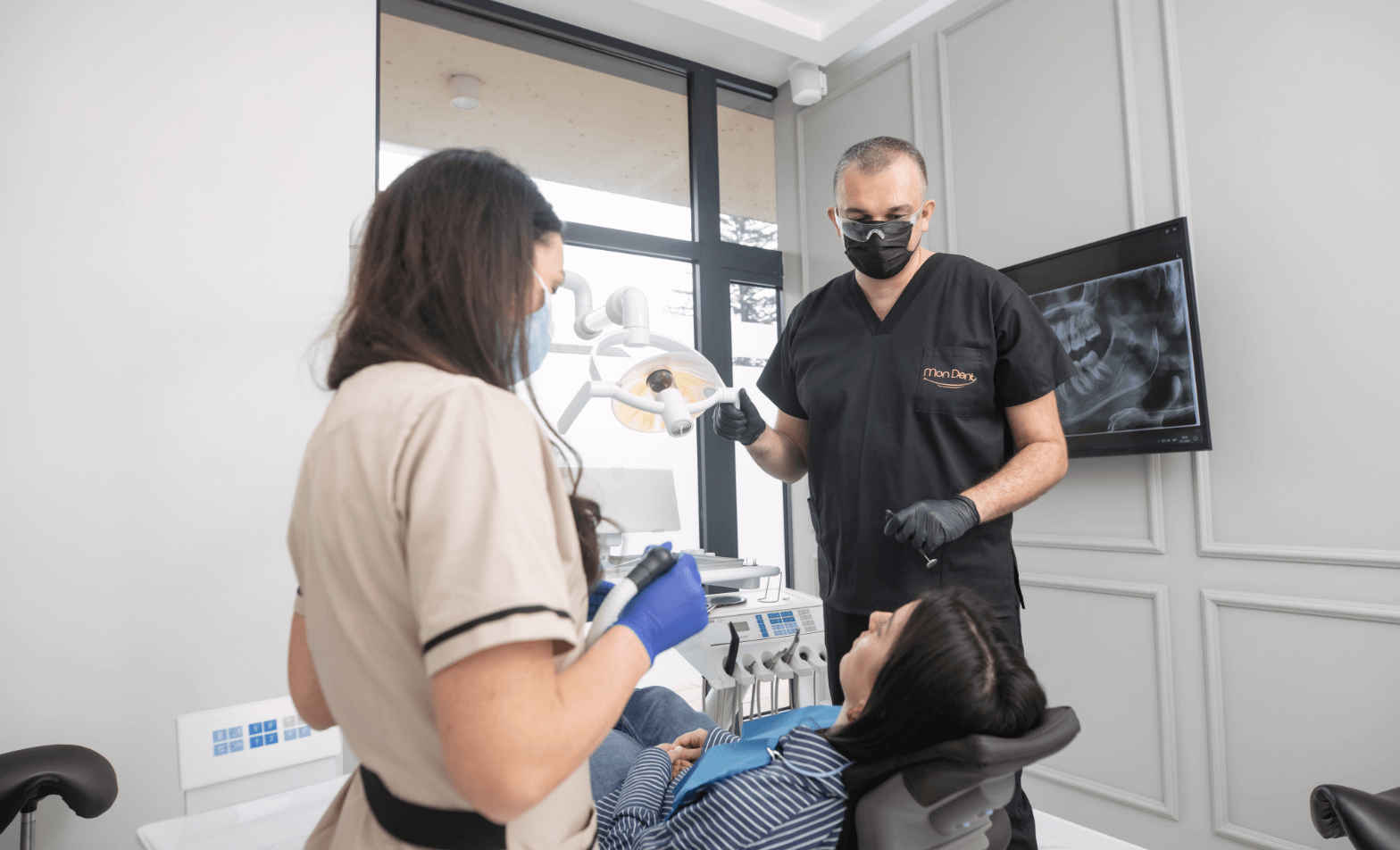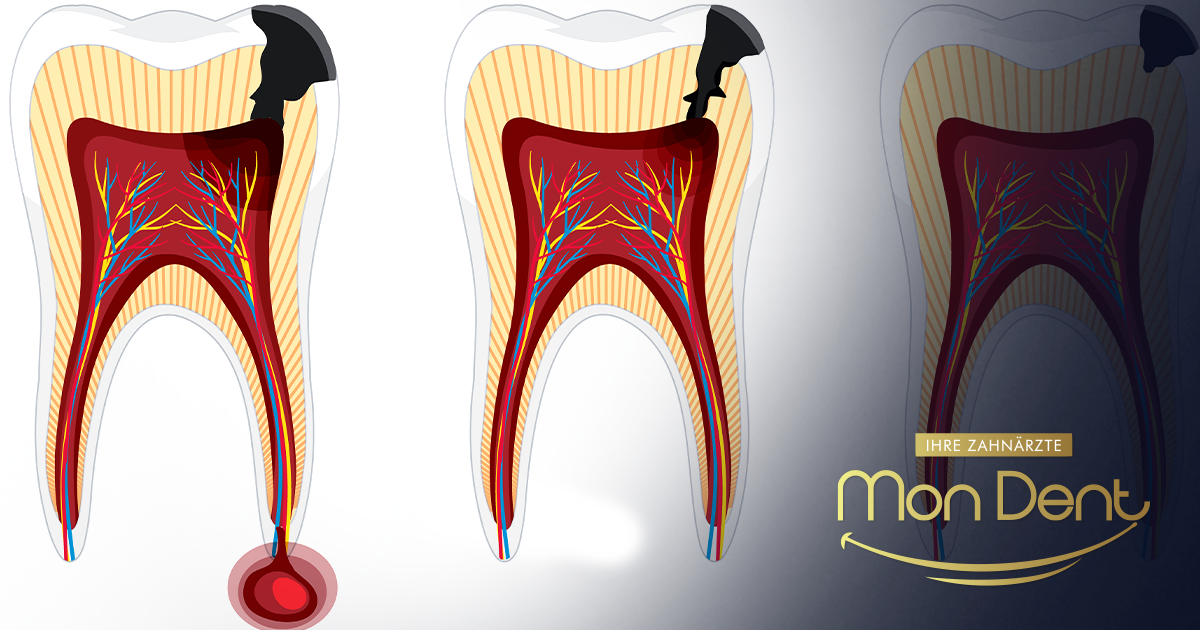Content:
- What is a cyst on a tooth?
- What are the most common symptoms?
- How is a tooth cyst diagnosed?
- Cyst on the tooth treatment – what are the options?
- Operation and recovery
- Conclusion
A dental cyst is most often a benign, fluid-filled cavity that develops around the tip of the tooth root due to chronic pulp infection. Many small cysts are asymptomatic and are treated conservatively with endodontic treatment; large, infected, or symptomatic cysts sometimes require surgical removal (cystectomy/apicotomy). They should not be ignored — if left untreated, they can lead to swelling, abscesses, and bone and tooth loss.
The greatest danger of a cyst on a tooth is that you may lose a tooth or part of the bone. This condition further requires do dental implants work and prolongs the agony of your dental condition. MonDent dental office together with its team emphasize the importance of preventive dental examinations and the importance of reporting to the dentist as soon as you notice any change.
What is a cyst on a tooth?
A tooth cyst occurs as a result of long-term inflammation of the pulp (tooth nerve), usually after untreated caries, trauma or failed endodontic treatment. Here we return to the importance of regular visits to the dentist. A previously untreated problem can cause a cyst on the tooth and the need for various dental procedures.
The tissue around the root tip reacts by forming a cystic cavity that can grow slowly over years. Most of these lesions are inflammatory in origin and are statistically the most common among odontogenic cysts.
How does a cyst appear on a tooth under a crown?
If a tooth has been previously treated or covered with a crown (cap), infection or inadequate endodontic treatment can leave necrotic pulp beneath the cap. Such a lesion is often discovered incidentally on a follow-up X-ray — the patient may not have any pain as the infection progresses. That is why it is important to monitor teeth that have crowns or large fillings — especially if you feel pressure or a change under the crown.
So don't neglect check-ups after crowns are placed and dental veneers recommended by your dentist. Quickly and easily schedule an appointment Visit your dentist and have your regular check-up. If you are a patient at the MonDent dental office in Banja Luka and are coming from Germany, you can have your regular check-ups after implant placement or crown placement at the MonDent dental office in Germany, without the additional cost of traveling to Bosnia and Herzegovina.
What are the most common symptoms?
Many cysts do not have symptoms for a long time. When symptoms do appear, the most common are:
- pain when pressing or chewing;
- local swelling or fistula (a channel through the skin/sore to the mouth that drains pus);
- sensitivity to hot/cold (less common in completely necrotic teeth);
- tooth movement or loosening in the case of a large lesion;
- incidental detection on orthopan or CBCT without symptoms.
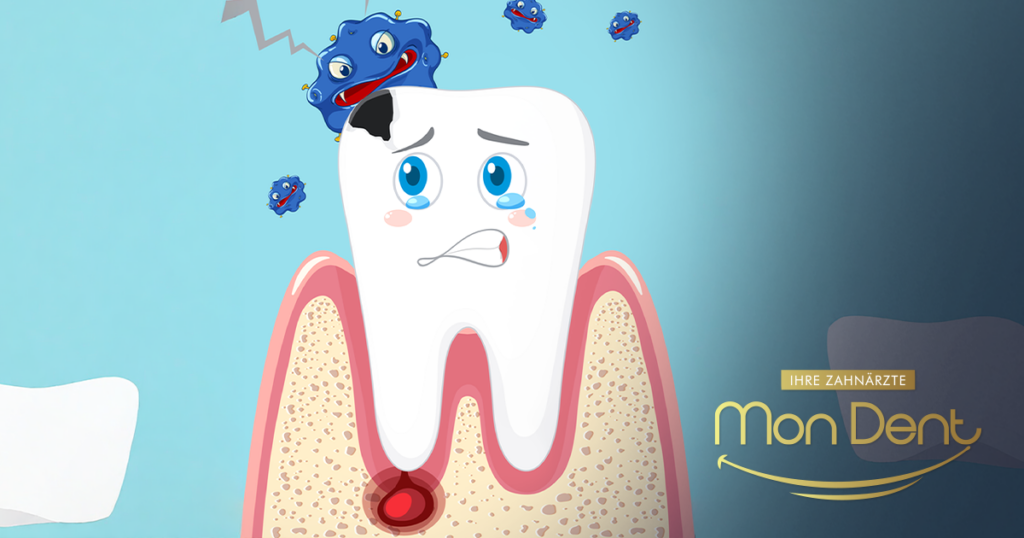
When does a purulent cyst appear on a tooth?
A cyst can become infected and “transform” into a purulent cyst if bacteria enter the cystic cavity or acute inflammation is activated. In this case, severe pain, redness, facial swelling and systemic symptoms (elevated temperature) occur. An abscess requires urgent treatment: drainage and removal of the source of infection (root canal or extraction), often with antibiotic support.
How is a tooth cyst diagnosed?
Diagnosis is made by a combination of: clinical examination, pulp vitality tests (hot/cold/electric test), palpation, and most importantly, radiography (periapical X-ray, orthopan; for more complex cases CBCT provides three-dimensional insight). Neurosurgical/ENT bony findings and the size of the lesion on the scan help in treatment planning. Regular follow-up scans help in early detection of cysts on the tooth under the cap and other hidden lesions.
Cyst on the tooth treatment – what are the options?
Treatment depends on the size of the lesion, symptoms and the possibility of saving the tooth:
- Conservative endodontic therapy
First and most often: the goal is to remove the infection from the root canal and fill it adequately. Many periapical lesions shrink and heal after quality endodontic treatment. For large lesions, the addition of decompression or intracanal medications (calcium hydroxide) may improve the outcome.
- Apicoectomy / cystectomy (surgical procedure)
If the lesion does not respond to conservative treatment or is clinically large/complicated in location, surgical intervention is recommended. surgery: The cystic covering is removed (enucleation) and sometimes the tip of the root is cut off (apicotomy). After surgical removal, the tissue is sent for histopathology to exclude rare tumor changes.
- Tooth extraction
If the tooth cannot be saved or is at risk, tooth extraction with subsequent cyst cleaning may be the best solution. After recovery, a restoration (dental implant, bridge, etc.) is considered.
- Drainage/antibiotics
In an acute abscess, drainage and often a short course of antibiotic therapy are required; however, antibiotics do not address the cause (source of infection) and must be combined with dental treatment.
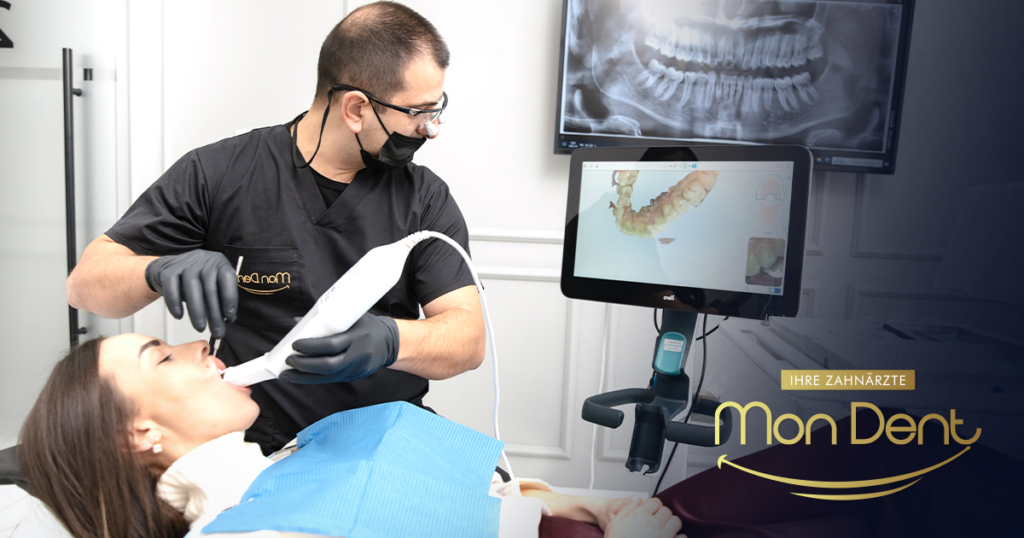
Surgery and recovery
The operation usually goes like this: local anesthesia → mucosal access → Enucleation of the cystic membrane and/or apicotomy → suturingThe duration depends on the size, but most interventions last 20–60 minutes.
The postoperative period includes cold compresses for the first 24 hours, analgesics as needed, and suture check-ups after 7–10 days. Your dentist will give you instructions on hygiene and possible antibiotic therapy. Most patients return to normal activities within a few days.
Complications if left untreated
An untreated cyst can lead to:
- spread of infection into the surrounding bone and soft tissues;
- abscess and fistula formation;
- bone resorption and displacement of adjacent teeth;
- sometimes systemic complications in immunocompromised individuals.
Therefore, it is recommended that any X-ray-detected lesion be evaluated and monitored or treated as indicated.
Conclusion
If you have any doubts (pain, swelling, change in taste or you have seen a change on an X-ray), do not wait for the problem to become urgent. At Mondent Clinic, we perform detailed diagnostics (periapical X-ray / CBCT), offer all treatment options and individually advise on the best solution for your tooth. You can make an appointment via online appointment forms or by phone.
Briefly about a tooth cyst:
- Most periapical cysts are benign and may respond to endodontic treatment.
- If pain, swelling, or pus occurs, you need an urgent examination — it may be a purulent cyst/abscess.
- Large or symptomatic cysts sometimes require surgical removal (cystectomy/apicotomy).
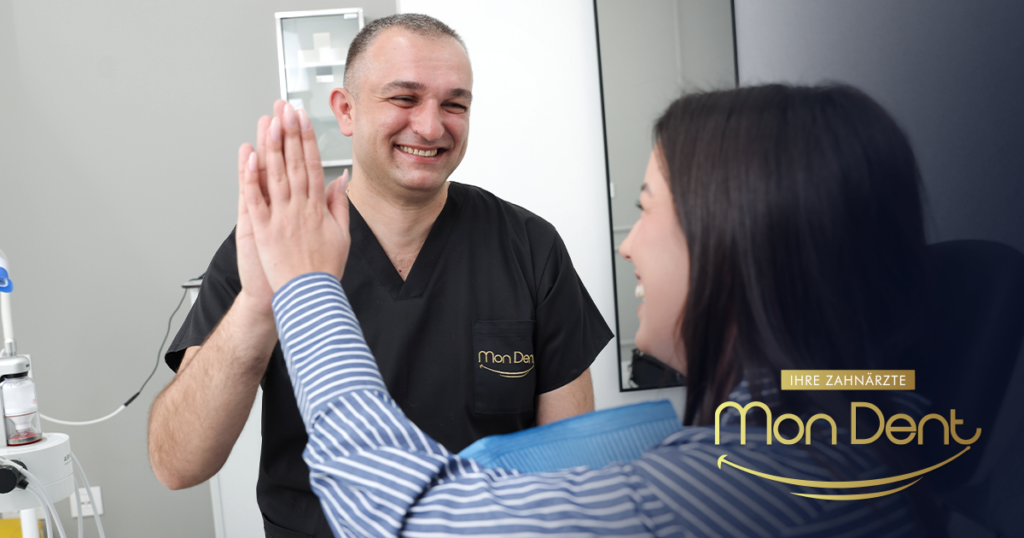
FAQ
Can a cyst on a tooth go away on its own?
Most periapical cysts do not resolve on their own; they require dental evaluation, often a root canal or surgical solution.
Does a cyst on a tooth mean I will lose the tooth?
Not necessarily, many teeth are saved with appropriate endodontic therapy; if the tooth is not rehabilitable, extraction may be necessary.
How quickly does a purulent cyst form?
The cyst develops slowly, but can become acutely infected and turn into an abscess relatively quickly (days to weeks) when bacterial superinfection occurs.




